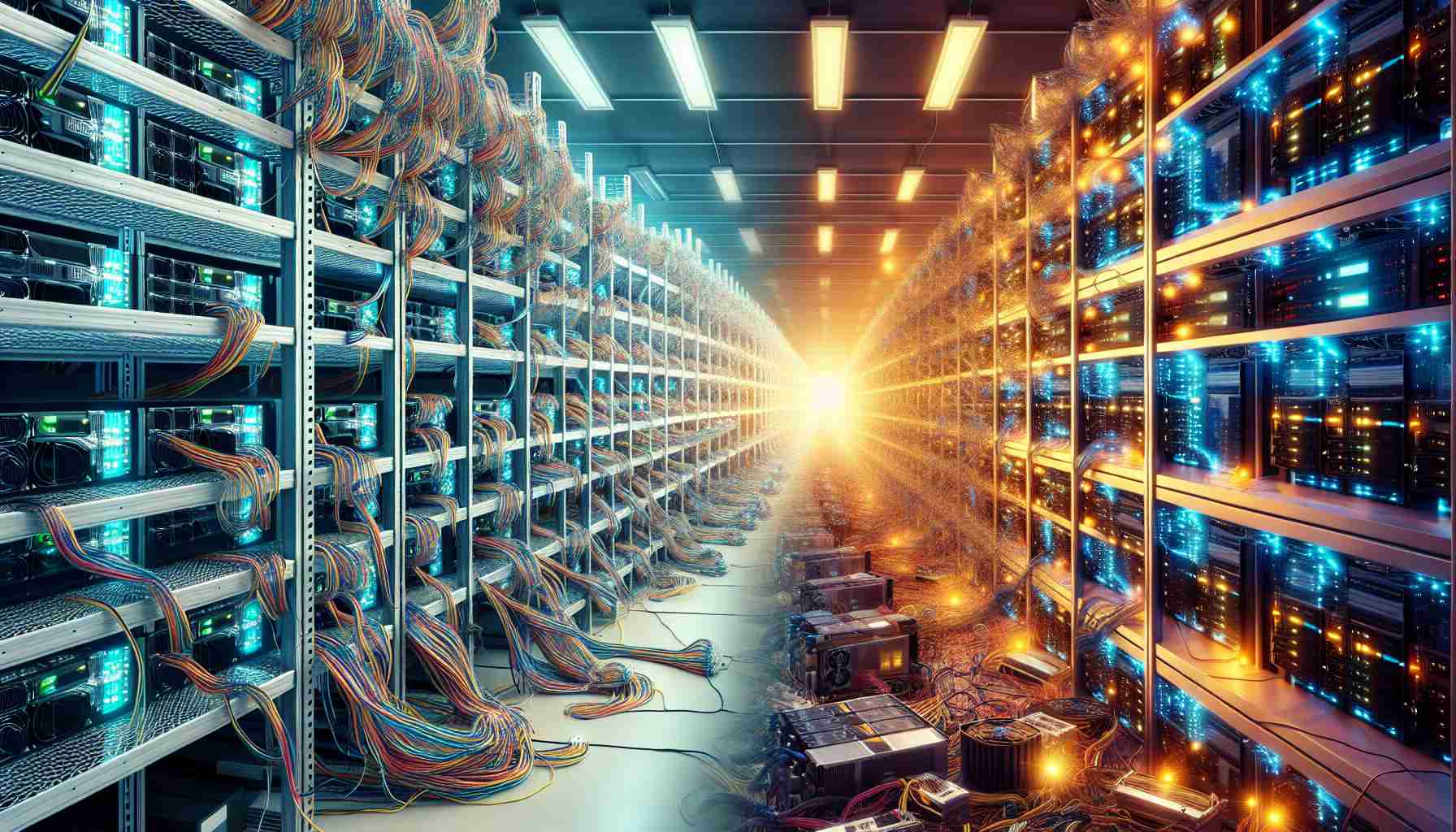Crypto firms are at the forefront of a new transactional trend, primarily led by the promise of artificial intelligence (AI). Companies that built their initial infrastructures around the demands of bitcoin mining are repurposing these facilities to serve the booming AI sector.
The requirement for powerful computational resources has placed bitcoin mining operations at an advantage. Equipped with robust power supplies and extensive fiber connectivity, these data centers are ideal for the intensive workloads underpinning AI initiatives.
Bitcoin mining is facing profitability challenges in the wake of the halving event in April, which saw the reward for mining new tokens slashed dramatically. With the tightening of profit margins, miners are exploring alternative avenues for revenue, aligning perfectly with the needs of AI-driven companies.
Strategic mergers and collaborations are quickly materializing as miners assess ways to leverage their investments, with deals involving large-scale compute capacity being a highlight. One such instance is Core Scientific’s increased provision of computing infrastructure to AI startup CoreWeave. This move alone is projected to yield substantial financial gains over the coming decades.
Fast-tracking these shifts, Hut 8 Mining Corp secured substantial funding to boost its data center capacities, pivoting towards AI with a purchase of Nvidia GPUs and formalizing customer agreements within its newly established AI vertical.
Further consolidating these trends, Bit Digital has reallocated its financial resources, investing in a significant number of Nvidia GPUs and server deployments — a decision driven by lucrative contracts within the AI space.
While mining operations form the core of this wave, trading platform Robinhood illustrated the sector’s broader appeal by acquiring Bitstamp, enhancing its cryptocurrency offerings and competing against industry heavyweights.
When discussing the conversion of Bitcoin mining facilities into AI data centers, it’s essential to consider both the context within the cryptocurrency industry and the wider implications of the shift to AI infrastructure.
Important Questions and Answers:
1. Why are Bitcoin mining facilities transitioning to AI data centers?
– Bitcoin mining facilities possess high-performance computing power and robust infrastructure ideal for AI’s computational needs. As the profitability of Bitcoin mining fluctuates, often due to factors like market price volatility and the periodic “halving” that reduces mining rewards, these facilities become attractive alternatives for AI-related tasks.
2. What challenges do operators face in this transformation?
– A key issue is the differing technical requirements between mining cryptocurrencies and running AI algorithms. While both require significant computational power, the specifics of the hardware and software configurations can vary. Therefore, miners must adapt their setups, which can include acquiring new hardware, such as GPUs preferred for AI processes, and investing in R&D for the integration.
3. What controversies or debates are associated with this shift?
– Energy consumption is a major point of contention. Bitcoin mining is often criticized for its environmental impact due to the high electricity usage. The AI industry, while potentially offering more efficient operations, also raises concerns about significant energy use. There’s ongoing debate over the ethical and environmental implications of redirecting such energy-intensive operations toward AI.
Advantages and Disadvantages:
Advantages:
– Miner diversification into the AI sector could smooth revenue streams, making operations less susceptible to the volatility of cryptocurrency markets.
– The repurposing of these data centers can lead to increased innovation in AI, leveraging existing computational infrastructure.
– It may contribute to the decentralization of AI services, challenging the monopoly of tech giants in this space.
Disadvantages:
– Significant capital investment may be required for the transition, which not all mining operations can afford.
– The environmental concerns surrounding energy consumption and efficiency persist, even when shifting the focus from cryptocurrency mining to AI computations.
– Existing staff may require retraining or additional expertise might need to be recruited to manage AI-centric operations.
To stay updated on the topic of Bitcoin mining and its intersection with AI, interested readers might check out reliable sources on cryptocurrency and technology. Suggested sources include websites like CoinDesk, which covers digital currencies, blockchain, and related news, or MIT Technology Review, which often discusses implications of emerging technologies including AI.
It’s important to reiterate that the URLs provided above are formatted based on the belief that they are valid at the time of writing and not direct links to specific subpages, reflecting only the main domain for each referenced source.



